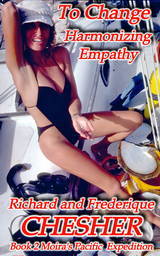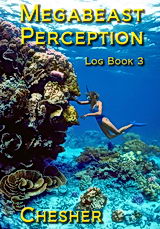Mitochondria
Energize
Mitochondria are the powerhouses of the modern cell, providing some 90% of the energy needed for survival. In 1963, scientists discovered mitochondria had their own DNA, arranged in circles, containing the blueprints for 37 of the molecules mitochondria need to create to generate energy.
The single-cell embryo that results from the merger of the egg and sperm has a solitary nucleus with a matching set of chromosomes with about 100,000 genes from the sperm and 100,000 from the egg. These are coded in about three billion base pairs along the strands of DNA.
The fertilized egg, and all of its descendant cells, divide their chromosomes into two mirror images and then split into new cells with each cell obtaining a full set of genes.
By comparison, the DNA of mitochondria has only 16,569 base pairs and these are all inherited from the cytoplasm of the egg. The male makes no contribution to this complement.
Making Fuel for the whole body
Each mitochondrion has a convoluted inner membrane, like a giant nucleus, within its smooth outer membrane. It generates energy by relaying electrons along a series of proteins embedded in the inner membrane. This series is called the respiratory chain. The electrons interact with oxygen and protons to form water and energy.
Mitochondria direct the energy released from the oxidation of hydrogen to pump protons across the inner membrane. This creates a charge and chemical differential that facilitates the synthesis of ATP Synthase which in turn facilitates the creation of ATP (adenosine triphosphate). ATP is liberated into the cell cytoplasm and distributed throughout the body as fuel for all cellular activities.
The process depends upon a steady supply of oxygen and hydrogen (H+) as well as electrons supplied from food. Should any of these be in short supply, the cells rapidly run out of fuel and die. Should mutations inhibit the process of ATP production, the cells begin to weaken.
Loss of fuel = Aging
Small mutations in the mitochondria's DNA can be distributed unevenly through the tissues of the body and are more difficult for the cells to detect and correct. These mutations have been identified as playing a key role in the process of aging (see the article by Wallace in the August 1997Scientific American).
Staying young, powerful and acid
H+ and free electrons exist in an acid environment and come from acid type foods. Hence, the body must maintain it's pH balance within very close tolerances and shifting hydrogen atoms is the major preoccupation of life. Our activities help or hinder this process.
Exercise
Exercise generates lactic and carbonic acid within the tissues, initially weakening the system by removal of the hydrogen ions as ATP is burned. But in the end, this increases the flow and movement of these ions and prevents the formation of isolated pockets of hydrogen or ATP depletion.
Eating initially decreases the hydrogen supply of the body because of the secretion of H+ ions as hydrochloric acid. Most of this is recovered, but the process of digestion - especially of fats and proteins - depletes the free ion and results in an increase in pH. The alkaline condition weakens the entire system.
Acid Drinks
To counter this loss of hydrogen ion, we commonly drink acids or eat acidic foods with meals containing fats and proteins. Beer, coke, wine, whisky, carbonated drinks, and vinegar are all highly acidic drinks. We commonly put lemon juice on fish, eat mushrooms (highly acidic) with steaks, or cranberry sauce with poultry. A drink made from two tablespoons of honey and two tablespoons of apple cider vinegar in a glass of water, sipped with meals, is a folk remedy for maintaining health.
Eating carbohydrates is less of a drain on the hydrogen ions of the body, and requires only one 7th of the energy to digest.
This is why nutritionists and doctors advocate exercise, a diet rich in carbohydrates, and low in proteins and fats.
Excess Calories do more harm than you'd think
Scientists have shown that excessive calories, common in rich countries with an abundance of food, cause an excess of free radicals which, in turn, damage mitochondria DNA. This accelerates aging and promotes the development of cancer.
Restricted diets, often half of what is commonly recommened as an average diet, results in much longer lived organisms.
Coenzyme Q and other Anti-oxidents,
Anti-oxidents, such as vitamin C or E have beneficial effects within the mitochondria by removing free radicals that damage mitochondria DNA. Coenzme Q, widely available in health food stores as a nutritional suppliment, is one of the critical anti-oxidents used in the process of ATP synthesis within the mitochondria's inner membrane.



